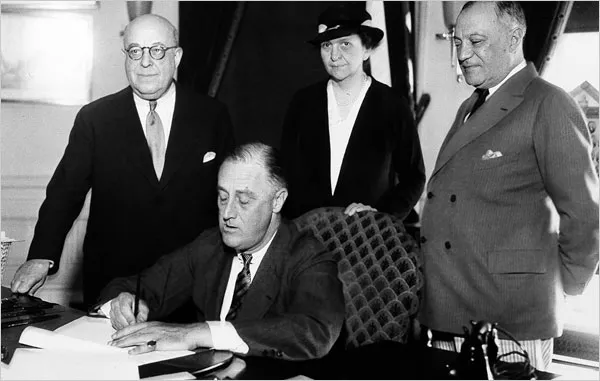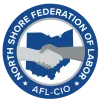The Most Consequential Presidencies for the Labor Movement

As we celebrate Presidents’ Day, it’s worth reflecting on the impact that various administrations have had on the labor movement. Some presidents have shaped labor policy in ways that strengthened unions and protected workers' rights, while others sought to undermine collective bargaining and weaken organized labor. Here are some of the most consequential presidencies for the labor movement, for better or worse.
Franklin D. Roosevelt (1933-1945)
No president has had a more profound impact on the labor movement than Franklin D. Roosevelt. Under his leadership, the New Deal ushered in sweeping labor reforms, most notably the Wagner Act (National Labor Relations Act) of 1935, which guaranteed workers the right to organize and collectively bargain. This legislation laid the foundation for modern labor relations in the United States. Additionally, the Fair Labor Standards Act of 1938 established the minimum wage, overtime pay, and child labor protections. Roosevelt’s presidency marked the golden era of labor rights expansion, solidifying unions as a powerful force in American politics and industry.
Harry S. Truman (1945-1953)
Truman maintained much of Roosevelt’s pro-labor stance but faced significant opposition from a growing conservative movement. In 1947, Congress passed the Taft-Hartley Act, which placed major restrictions on labor unions, including banning closed shops and allowing states to enact so-called “right-to-work” laws. Although Truman vetoed the bill, Congress overrode him, marking a significant setback for organized labor. However, Truman remained a strong advocate for workers, supporting fair employment practices and fighting against racial discrimination in the workplace.
Lyndon B. Johnson (1963-1969)
Lyndon Johnson’s presidency saw significant gains for workers, particularly through his Great Society programs. The passage of the Civil Rights Act of 1964 and the Economic Opportunity Act expanded job opportunities and workplace protections, particularly for marginalized communities. Johnson also strengthened labor protections through various anti-poverty initiatives and increased federal funding for job training programs. His administration reinforced the link between the labor movement and the broader fight for social justice.
Ronald Reagan (1981-1989)
If Roosevelt was the most pro-labor president, Ronald Reagan was arguably the most anti-labor. His defining moment came in 1981 when he fired over 11,000 striking air traffic controllers (PATCO), effectively breaking the union. This move signaled a shift toward corporate power and anti-union policies, emboldening private-sector employers to take a harder stance against organized labor. Reagan’s presidency saw the rise of union-busting tactics, deregulation, and an overall decline in union membership that continues to impact workers today.
Barack Obama (2009-2017)
While Obama came into office with strong union support, his impact on the labor movement was mixed. The Lilly Ledbetter Fair Pay Act, signed in 2009, improved protections against wage discrimination. Additionally, his National Labor Relations Board (NLRB) appointees made pro-labor rulings that helped unions organize. However, major labor priorities, such as the Employee Free Choice Act (EFCA), which would have made it easier for workers to unionize, failed to pass. Still, Obama’s executive actions protected workers from wage theft and expanded overtime pay for millions.
Donald Trump (2017-2021)
Donald Trump’s first term was marked by policies that significantly weakened labor protections. His administration rolled back worker safety regulations, appointed pro-business figures to the National Labor Relations Board (NLRB), and made it more difficult for workers to unionize. Trump’s tax cuts disproportionately favored corporations, allowing businesses to grow profits while failing to ensure wage growth for workers. Additionally, his Supreme Court appointments contributed to the weakening of public-sector unions through cases such as Janus v. AFSCME (2018), which eliminated mandatory union fees for public employees, thereby reducing union funding and influence. His administration also made it easier for companies to classify workers as independent contractors, stripping them of labor protections such as minimum wage and overtime pay.
Joe Biden (2021-2025)
Joe Biden has positioned himself as one of the most pro-labor presidents in modern history. His administration aggressively supported union organizing efforts, particularly in industries like manufacturing, technology, and logistics. Biden’s Infrastructure Investment and Jobs Act has created thousands of union jobs, and his appointments to the NLRB have favored stronger labor protections. He has publicly backed high-profile union campaigns, making him the first sitting president in recent memory to walk a picket line. His presidency marks a resurgence of federal support for the labor movement at a critical time.
Conclusion
From Roosevelt’s New Deal to Reagan’s attack on unions and Biden’s revival of pro-labor policies, the presidency has played a crucial role in shaping the labor movement. As the Trump administration actively works to destroy unions, we know that the fight for workers’ rights continues. The legacy of these administrations serves as a reminder of the power of government to either uplift or suppress organized labor. This Presidents’ Day, we recognize those leaders who fought for working people and reflect on the ongoing struggle to protect and expand labor rights in America.
